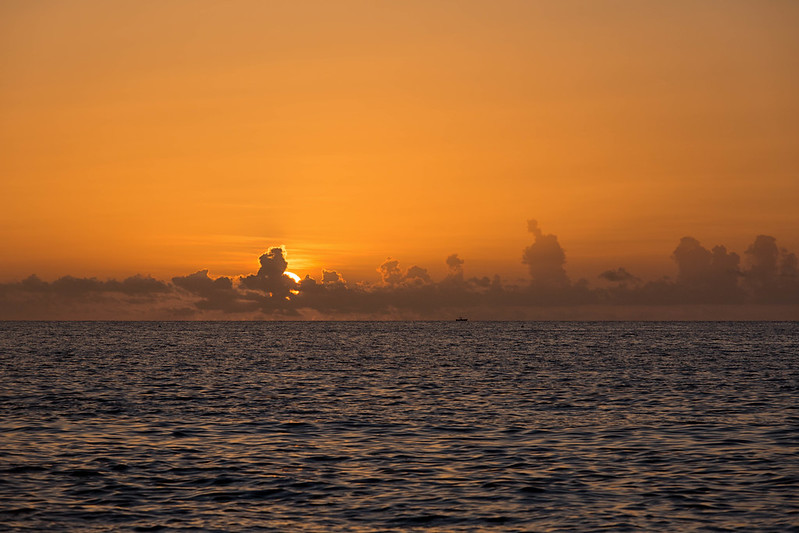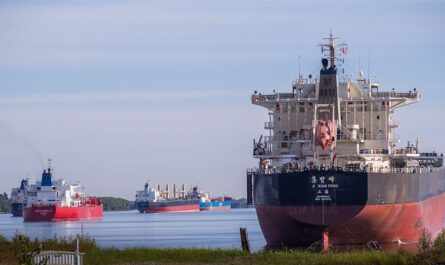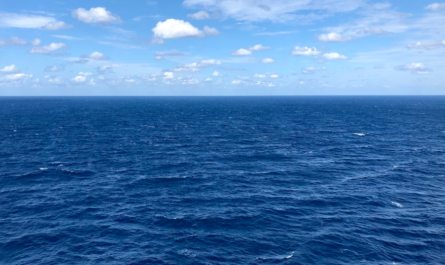The Atlantic Ocean, spanning roughly 41 million square miles, is one of the most traversed and strategically significant oceans on the planet. From the early days of exploration to today’s globalized economy, the Atlantic has been a vital route for trade, cultural exchange, and strategic navigation. However, as human activity in international waters has increased, so too has the need for governance and regulation to ensure that nations use the ocean fairly, sustainably, and responsibly. This is where the Law of the Sea comes into play—a complex body of international agreements, conventions, and customs that guide how countries interact in maritime environments.
This article explores the principles and regulations that govern the Atlantic’s international waters, focusing on the United Nations Convention on the Law of the Sea (UNCLOS), its applications in the Atlantic, and the current challenges facing this international legal framework. We’ll also discuss how the Law of the Sea aims to address crucial issues such as environmental conservation, navigation rights, economic exploitation, and maritime disputes.
Understanding the United Nations Convention on the Law of the Sea (UNCLOS)
The United Nations Convention on the Law of the Sea (UNCLOS) is the foundation of modern maritime law and provides the legal framework that governs the world’s oceans, including the Atlantic. Adopted in 1982 after decades of negotiations, UNCLOS establishes guidelines for using marine resources, protecting marine environments, and defining maritime boundaries.
UNCLOS divides the ocean into various zones, each with different rights and responsibilities for coastal and non-coastal states. These zones help determine who has jurisdiction over certain activities, such as fishing, oil exploration, and marine conservation. The key zones under UNCLOS include:
- Territorial Sea: Extending up to 12 nautical miles from a country’s coastline, the territorial sea is an area where the coastal state has full sovereignty, similar to its land territory. This zone allows the state to regulate all activities, including passage, resource extraction, and law enforcement.
- Contiguous Zone: Beyond the territorial sea, up to 24 nautical miles from the baseline, the contiguous zone allows a coastal state limited enforcement rights. The state can enforce laws related to customs, immigration, and pollution control to prevent violations within its territory.
- Exclusive Economic Zone (EEZ): Extending up to 200 nautical miles from the coast, the EEZ grants the coastal state rights to explore, exploit, and manage natural resources, including fishing and oil extraction. However, other nations retain the freedom of navigation and overflight in the EEZ.
- Continental Shelf: A nation’s continental shelf may extend beyond the EEZ if geological conditions permit. The coastal state has rights to resources on or under the seabed within this area but does not have jurisdiction over the water column.
- High Seas: Beyond the EEZs lie the high seas, which are open to all nations and governed by international law. The high seas belong to no single country, and all states have the freedom of navigation, fishing, and research under UNCLOS, with the obligation to avoid harmful activities and adhere to shared environmental standards.
- The Area: Known as the seabed beyond national jurisdiction, the Area is managed by the International Seabed Authority (ISA), which regulates mining activities and ensures that benefits are shared internationally.
The Law of the Sea and the Atlantic Ocean: Key Principles and Applications
With the Atlantic touching the shores of over 30 countries across five continents, cooperation and regulation are essential to manage its vast resources and ensure peaceful relations. UNCLOS provides a universal set of rules that Atlantic nations adhere to, though regional agreements often supplement these rules.
1. Navigational Rights and Freedom of the Seas
One of the core principles of the Law of the Sea is freedom of navigation, which allows vessels from any nation to sail through international waters without interference. This principle is crucial in the Atlantic, where busy shipping lanes support a significant portion of global trade. UNCLOS upholds the right of “innocent passage” through the territorial seas of other countries, meaning ships can navigate without entering ports or engaging in resource extraction, provided they do not threaten the coastal state’s security.
This freedom has strategic and economic implications for both coastal and landlocked countries. The Atlantic’s shipping lanes connect the economies of North America, South America, Europe, and Africa, making uninterrupted navigation essential. However, freedom of navigation also requires countries to prevent illegal activities, such as piracy, drug trafficking, and human smuggling.
2. Resource Management and Economic Exploitation
The Atlantic Ocean holds vast resources, including fish stocks, oil and gas reserves, and mineral deposits on the ocean floor. Under the Law of the Sea, countries have the exclusive right to manage and exploit resources within their EEZs, which has led to a thriving economy of fishing, drilling, and exploration in the Atlantic. However, resource exploitation comes with responsibilities to prevent overfishing, pollution, and ecosystem degradation.
UNCLOS requires coastal states to ensure the sustainable use of resources within their EEZs, which includes managing fish stocks to prevent depletion. For instance, the North Atlantic is home to economically important species like cod, haddock, and tuna, which are subject to international fishing quotas and conservation measures. The Northwest Atlantic Fisheries Organization (NAFO) is an example of a regional body that collaborates with Atlantic nations to set quotas, monitor fish stocks, and promote sustainable fishing practices.
In addition to biological resources, the Atlantic seabed holds potential mineral resources, including polymetallic nodules, which contain valuable metals like copper, nickel, and cobalt. The ISA regulates these resources in areas beyond national jurisdiction, ensuring that mineral extraction on the seabed benefits all humanity.
3. Environmental Protection and Conservation
As human activity in the Atlantic has increased, so have concerns about its environmental health. The Law of the Sea emphasizes the protection and preservation of the marine environment, requiring states to prevent pollution, protect biodiversity, and mitigate damage to marine ecosystems. These obligations are critical in the Atlantic, where pollution from industrial runoff, plastic waste, and oil spills poses a threat to marine life and coastal communities.
Atlantic nations have established Marine Protected Areas (MPAs) to safeguard vulnerable ecosystems, such as coral reefs, breeding grounds, and migratory routes. For example, the OSPAR Convention, signed by 15 countries bordering the North Atlantic, provides a framework for protecting the marine environment from pollution, monitoring biodiversity, and promoting sustainable development in the region.
Additionally, countries are taking steps to address climate change impacts in the Atlantic, such as warming waters, acidification, and rising sea levels. By reducing greenhouse gas emissions, establishing MPAs, and restoring coastal habitats like mangroves and seagrasses, Atlantic nations aim to enhance the ocean’s resilience and preserve biodiversity.
Maritime Boundaries and Disputes in the Atlantic
The Atlantic’s geopolitical landscape involves numerous maritime boundary agreements and, at times, disputes. Establishing clear boundaries is essential for determining jurisdiction over resources, fishing rights, and environmental protection responsibilities.
UNCLOS provides a legal process for resolving boundary disputes, often relying on median lines (the equidistant point between two coasts) as a basis for division. However, when countries cannot reach an agreement, UNCLOS encourages peaceful resolution through arbitration and judicial processes, such as the International Tribunal for the Law of the Sea (ITLOS) or the International Court of Justice (ICJ).
Some notable boundary disputes in the Atlantic include:
- The Guyana-Venezuela Dispute: This dispute involves overlapping claims in the Atlantic between Venezuela and Guyana. It relates to oil-rich waters off the coast of Guyana and has been addressed by the ICJ to determine ownership rights.
- The U.K.-Spain Dispute Over Gibraltar Waters: Tensions between the United Kingdom and Spain over waters surrounding Gibraltar have led to conflicts about fishing rights and territorial sovereignty. Although UNCLOS provides a framework, both countries continue to assert claims in this contested area.
- The Canada-France Dispute Over Saint Pierre and Miquelon: Canada and France have disputed the extent of France’s EEZ around the French overseas territory of Saint Pierre and Miquelon, an island group near Newfoundland. This dispute was resolved in 1992 through arbitration, setting a precedent for peaceful negotiation under UNCLOS.
The Challenges of Enforcing the Law of the Sea in the Atlantic
While UNCLOS provides a legal framework, enforcing the Law of the Sea in the vast Atlantic Ocean is challenging. Limited resources, varying national interests, and competing economic priorities can hinder effective enforcement. Some of the primary challenges include:
1. Illegal Fishing and Resource Exploitation
Despite regulations, illegal, unreported, and unregulated (IUU) fishing remains a persistent problem in the Atlantic. Vessels operating without proper licenses can harm fish stocks, destabilize local economies, and disrupt conservation efforts. Atlantic nations are increasing surveillance, improving data sharing, and working with organizations like the International Maritime Organization (IMO) to combat IUU fishing, but enforcement remains a challenge.
2. Pollution and Environmental Degradation
The Atlantic faces pollution from land-based sources, marine shipping, and oil extraction. Plastic waste, chemical runoff, and oil spills damage marine ecosystems and pose health risks to coastal populations. While UNCLOS mandates pollution prevention, implementing and enforcing these regulations can be difficult, particularly on the high seas where no single country has jurisdiction.
3. Climate Change and Rising Sea Levels
Climate change is affecting the Atlantic’s marine ecosystems, fisheries, and coastal infrastructure. Rising sea levels and warmer ocean temperatures are impacting biodiversity, altering migration patterns, and increasing the risk of extreme weather events. While UNCLOS recognizes the need for environmental protection, climate change introduces new complexities that require international collaboration and adaptation strategies.
The Future of the Law of the Sea in the Atlantic
The Law of the Sea is essential to maintaining order, sustainability, and cooperation in the Atlantic Ocean. As new challenges emerge, including deep-sea mining, offshore renewable energy, and climate-related issues, UNCLOS will need to adapt to modern realities. Recent efforts, such as the High Seas Treaty, aim to extend protections to biodiversity beyond national jurisdictions, strengthening global governance of ocean resources.
The Atlantic Ocean’s vast international waters are a shared heritage, rich in resources and crucial to global ecosystems. Through collaboration, sustainable practices, and adherence to the principles of the Law of the Sea, countries can help ensure that the Atlantic continues to thrive for generations to come. By balancing economic interests, environmental stewardship, and peaceful cooperation, the Law of the Sea remains our best tool for governing the Atlantic’s immense and invaluable waters.



